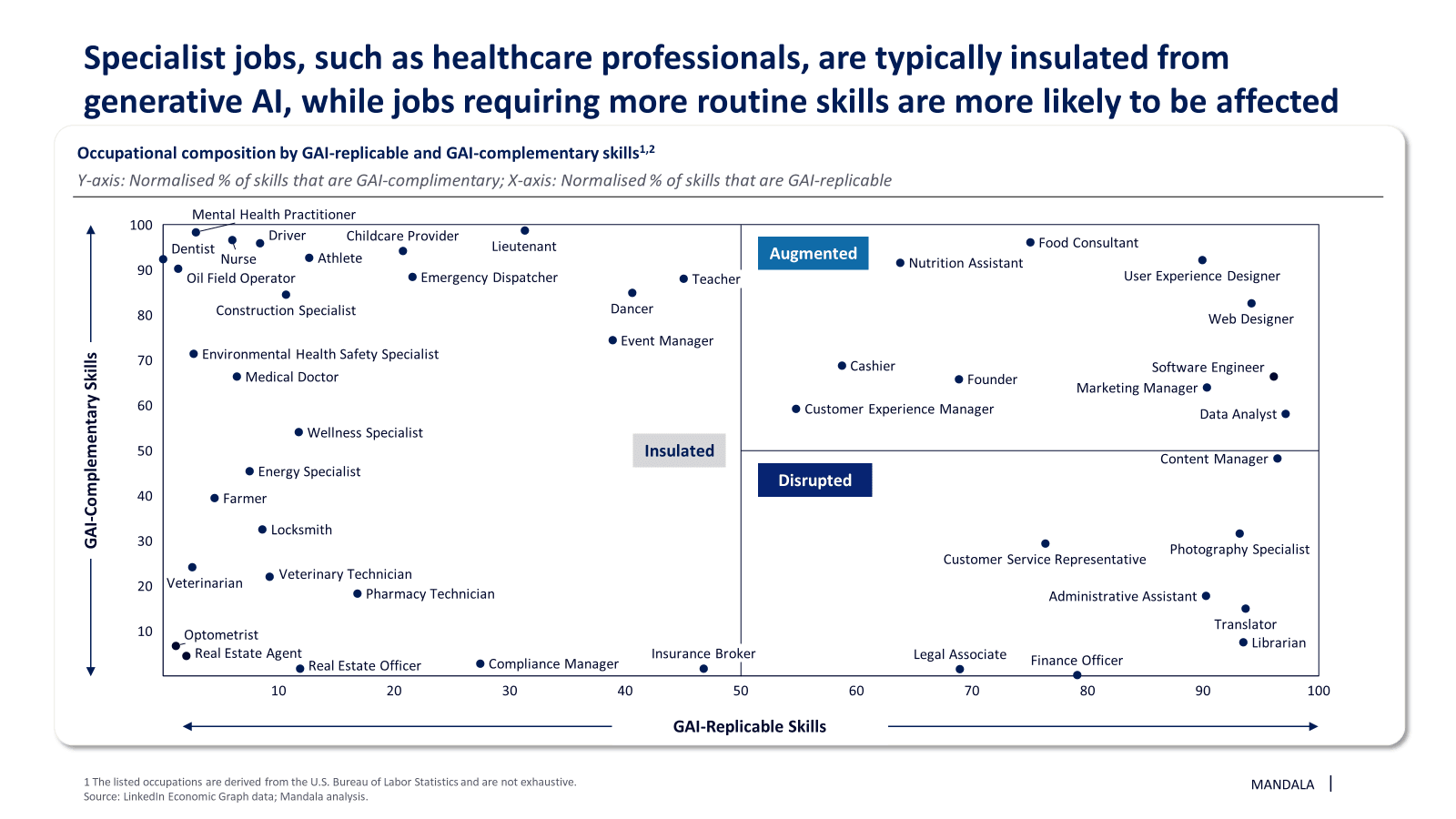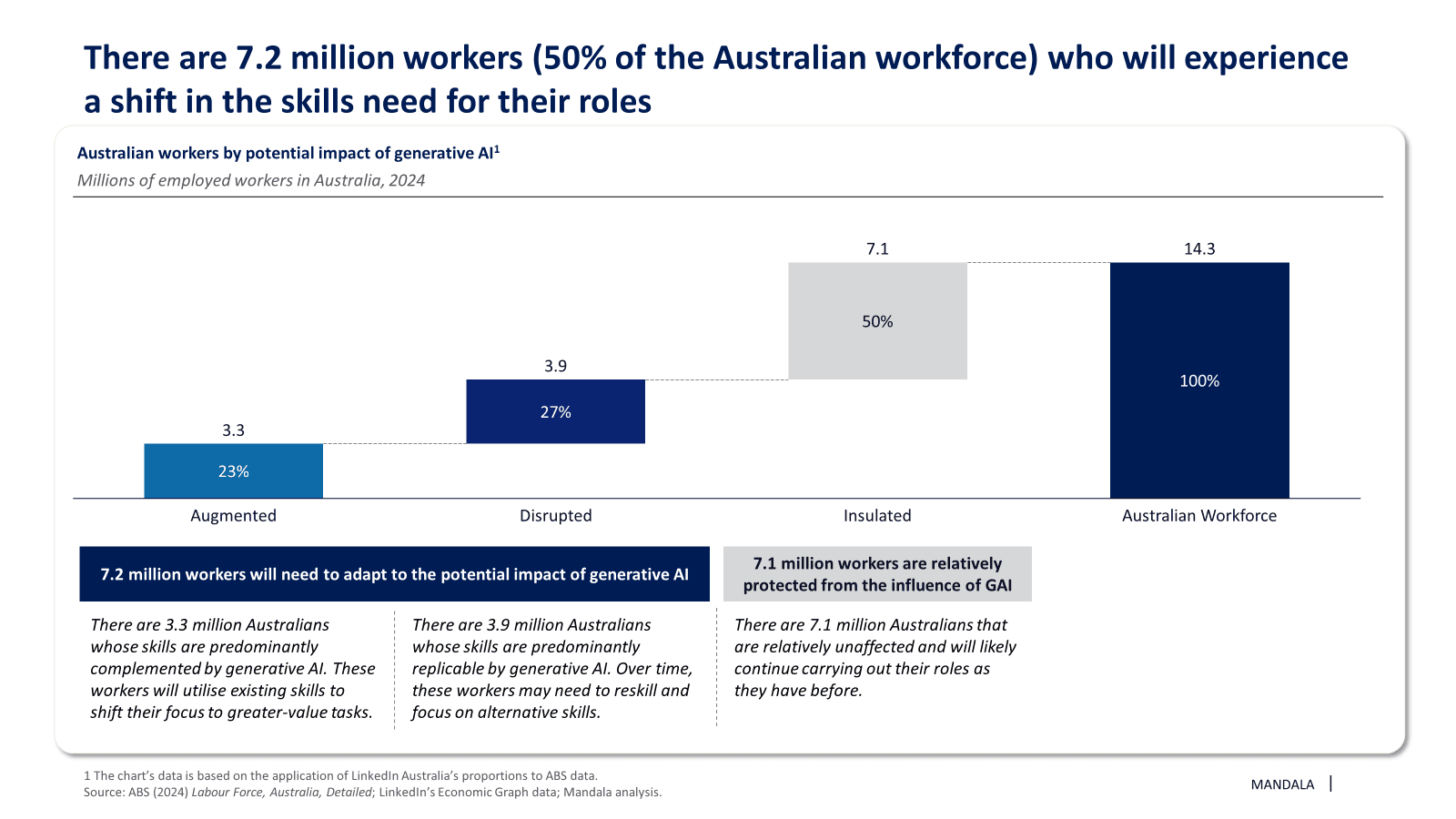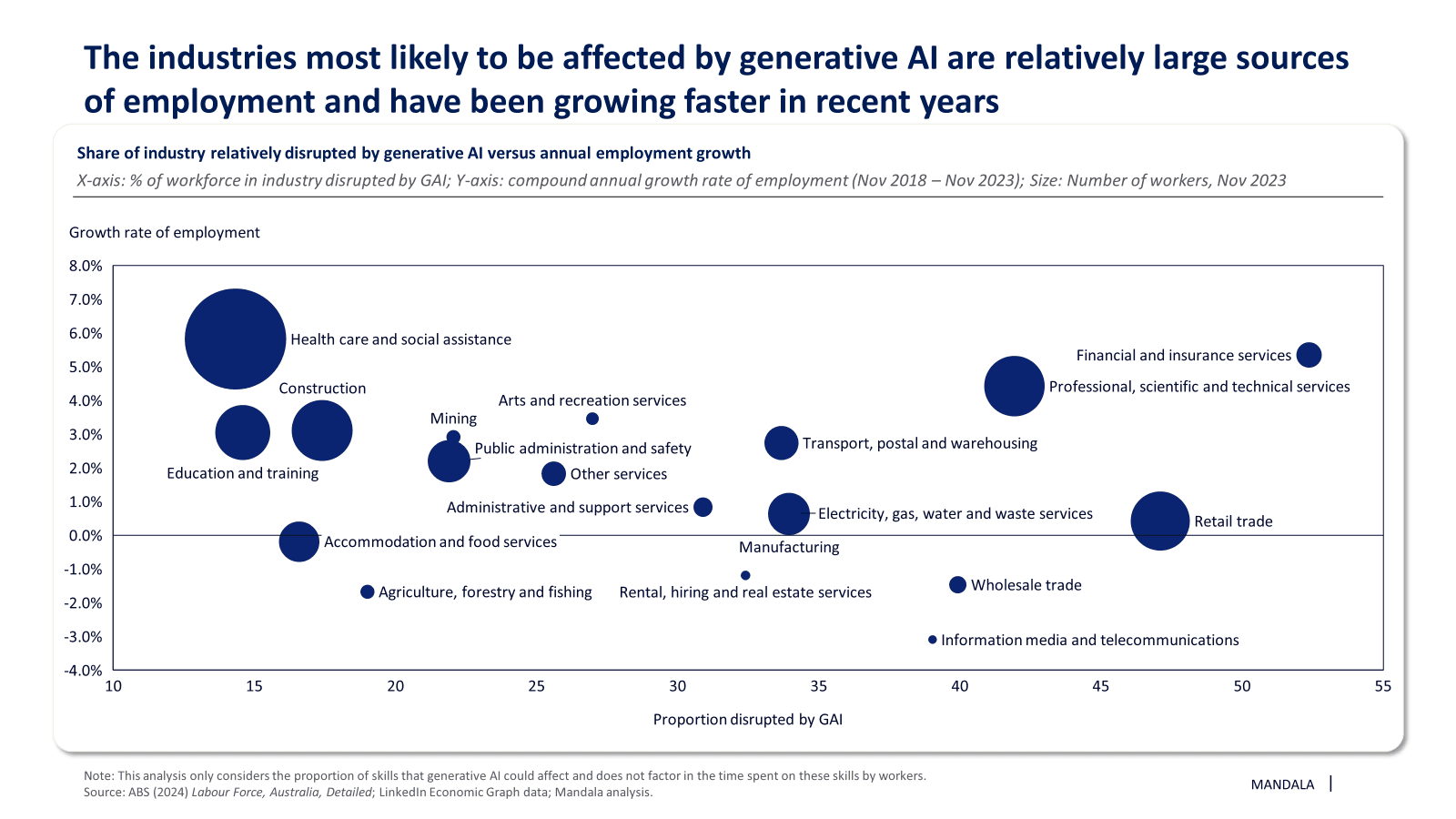
Preparing Australia's Workforce for Generative AI
21.03.2024 - 04:06
Our new research ‘Preparing Australia’s Workforce for Generative AI’ in partnership with LinkedIn, examines the potential influence generative AI could have on Australia’s workforce. Our report finds that generative will transform the workplace for 7.2 million Australians by creating opportunities for productivity gains. The influence of generative AI is expected to vary significantly across industries, with the effect expected to be greatest amongst service-related sectors, which are also large sources of employment in Australia.
Generative AI will change the skills composition of Australian workers
Generative artificial intelligence (AI) has emerged as a new technology and tool at the disposal of everyone. It is a subset of machine learning using foundation models that specialises in generating output based on training data and user input.
To identify the potential impact of generative AI on the Australian workforce, we have leveraged LinkedIn's Economic Graph data to understand what skills could be replicated by generative AI and what skills would need to be performed by a human but could be complemented with generative AI. Based on this skills-based framework, jobs can be classified into three categories: (1) Augmented: jobs where the core skills include a large share of both GAI-replicable and GAI-complementary skills; (2) Disrupted: jobs where the core skills include a large share of GAI-replicable and a relatively low share of GAI-complementary skills; and (3) Insulated: jobs that have a relatively small proportion of GAI-replicable skills in their core skills.

Generative AI will transform the workplace for 7.2 million Australian workers by creating opportunities for productivity gains
There are 7.2 million workers who will need to re-skill and adapt to the potential opportunity that generative AI presents.

There are 3.3 million workers who will likely use generative AI to augment their work, while another 3.9 million will likely use generative AI to carry out more routine and predictable tasks to focus on greater value-adding activities.
Service-related industries are most likely to be influenced by generative AI – these industries are typically larger sources of employment
While the influence of generative AI is seen at the skills and occupation level, it will also have a varying degree of effect by industry.

Industries that are most likely to be affected are service-related industries, which are typically larger sources of employment for Australian workers.
Read and download the full report here.
Read our latest posts

Optimising Australia’s Specialist Investment Vehicles for the Net Zero Journey
Mandala, in partnership with IGCC, explores how Australia’s Specialist Investment Vehicles (SIVs) are deploying public capital to accelerate the net zero transition. The report examines the current funding landscape, identifies structural challenges that limit the effectiveness of public investment, and sets out a pathway to evolve the SIV system into a more coordinated, capital-led model aligned with national priorities.
10 Dec, 2025

$160 billion and counting: The cost of Commonwealth regulatory complexity
Our latest research for the Australian Institute of Company Directors (AICD) reveals Australia’s growing regulatory burden. The cost to businesses of complying with federal regulation has risen to $160 billion (5.8 per cent of GDP), up from $65 billion (4.2 per cent of GDP) in 2013. More complex laws are contributing to the increase in costs and redirecting business resources away from growth and innovation. Board time on compliance has doubled from 24 percent to 55 percent in 10 years, while the external legal spend now sits at $16bn up from $6bn in 2010. While the UK, EU, Canada, New Zealand and US are simplifying regulation to drive growth, Australia risks falling further behind without taking immediate policy action.
2 Dec, 2025

Data Centres as Enabling Infrastructure
Mandala’s latest research, commissioned for Data Centres Australia by AirTrunk, Amazon Web Services, CDC Data Centres and NEXTDC, shows that data centres are key drivers of economic growth, renewable energy investment, and sustainable water solutions. The report finds that data centres use relatively modest amounts of energy and water while generating significant economic value, investing in power and water infrastructure that benefits communities, and helping to accelerate Australia’s clean energy transition.
25 Nov, 2025

Attracting international capital
International investment has powered Australia's property sector, with international investors providing $1 in every $3 of institutional property investment over the past ten years. Yet in recent years, Victoria and Queensland have introduced additional taxes on these investors. This report examines a critical question: are these taxes deterring the investment Australia needs to build cities, create jobs, and support economic growth? Commissioned by the Property Council of Australia, the analysis reveals that Victoria has seen global institutional investment plummet by 53% since 2022, coinciding with rising tax rates. Queensland shows similar stagnation despite strong economic conditions. Through economic modelling and case studies of stalled projects - from student accommodation to industrial estates - the report quantifies what removing these surcharges could mean for Australia's economic future and competitiveness in attracting international capital.
24 Nov, 2025